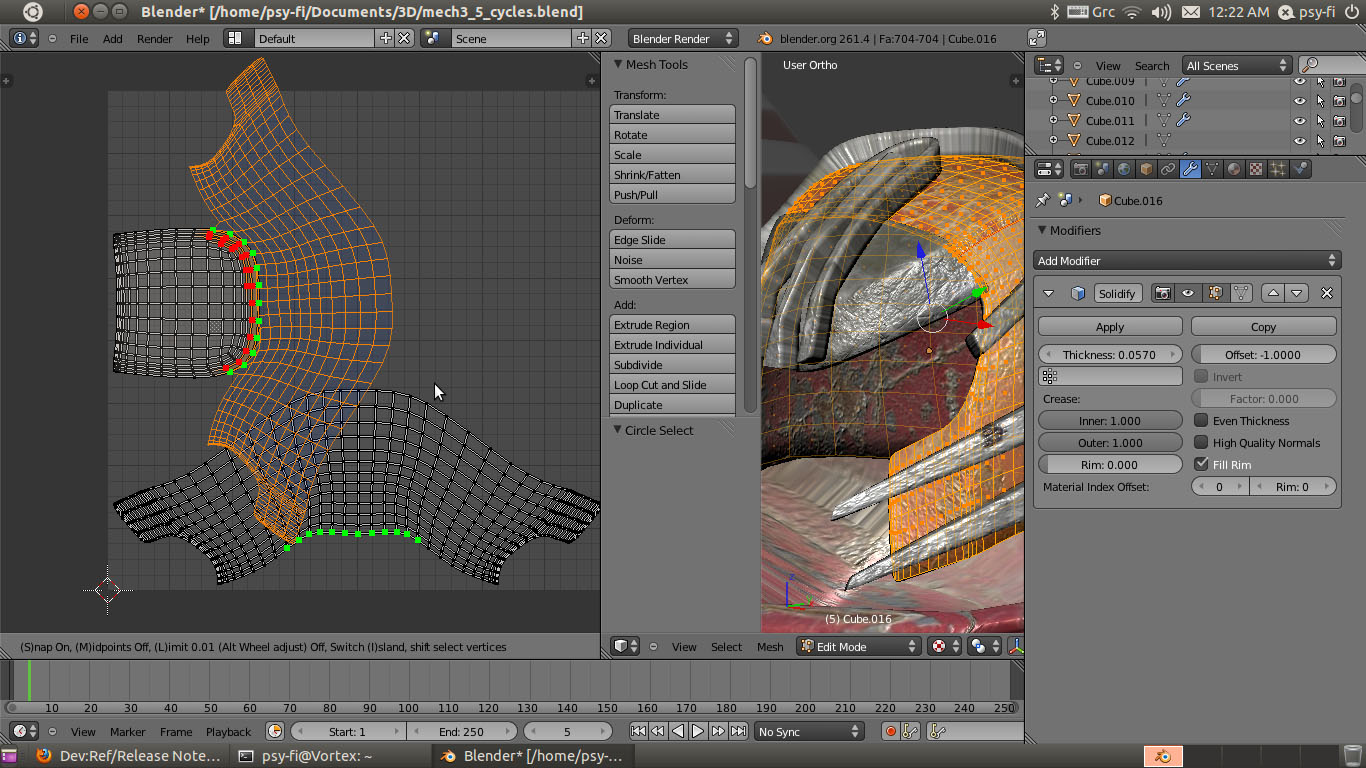

The node was contributed by Angus Stanton. The trim node makes curve splines shorter, with a length or factor input. Curve Trim The curve trim and fill nodes used on curve splines from text characters It’s the counterpart to the existing 2D curve fill in 2.93, but it should give better, more predictable results. It was contributed by Erik Abrahamsson, building on the triangulation library built by Howard Trickey for exact boolean. The fill node creates a 2D mesh from curves, filling the inside with faces. This node is the counterpart of the existing “Curve Bevel”, except that the node can accept multiple input profiles, and automatically marks sharp edges. That flexibility means that now any object that supports geometry nodes can output curve data, not just curve objects! Curve to Mesh The curve to mesh node with 16 profile splines But we can take advantage of the flexibility of nodes to make the process much more visible. Currently Blender doesn’t distinguish very well between the two, because it implicitly changes a curve into a mesh. One of the fundamental ideas of the changes is that it should be clearer when data is a curve and when it is a mesh.

The current built-in attributes on curve data The New Nodes NURBS A more advanced spline type with different controls exposed.Poly A simple series of connected points.Bezier With control points handles, and handle types, each editable as separate attributes.

Just like curve objects, three curve types are supported in geometry nodes: Where are we, and what does the future hold? So I thought it would be a good idea to give an update on the project. One of the last larger changes for 3.0, supporting the geometry nodes modifier on curve objects, was committed a few days ago. Developer Hans Goudey shares the results of the geometry nodes curve project, and future goals.Īdding a procedural curve editing pipeline in 3.0 has been a large focus for the geometry nodes team and community for the past few months.


 0 kommentar(er)
0 kommentar(er)
